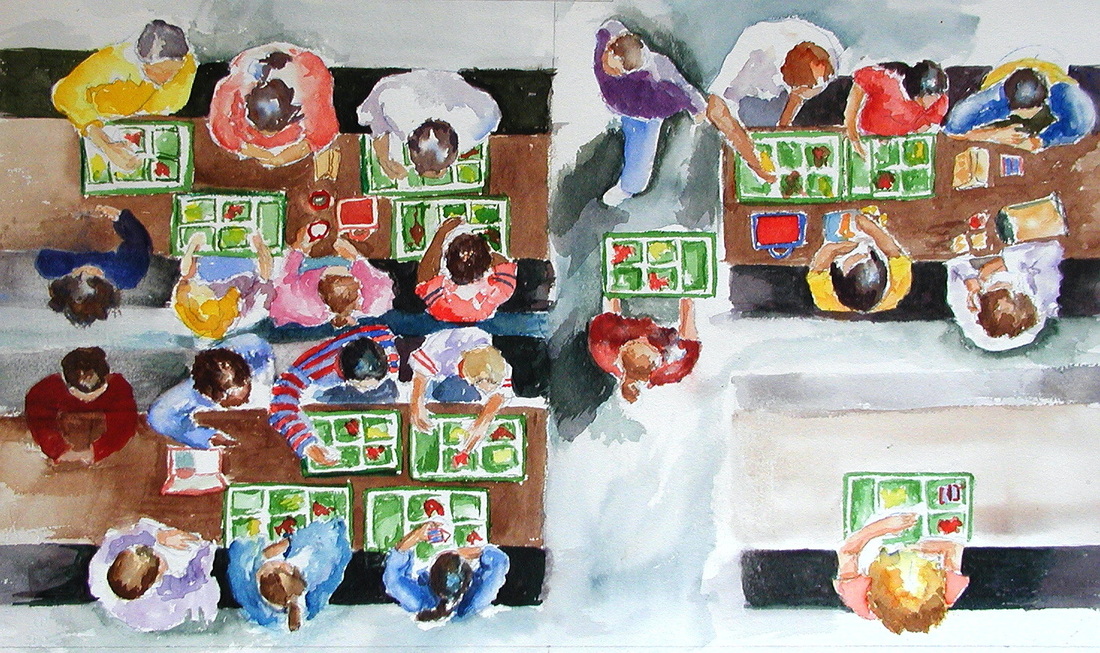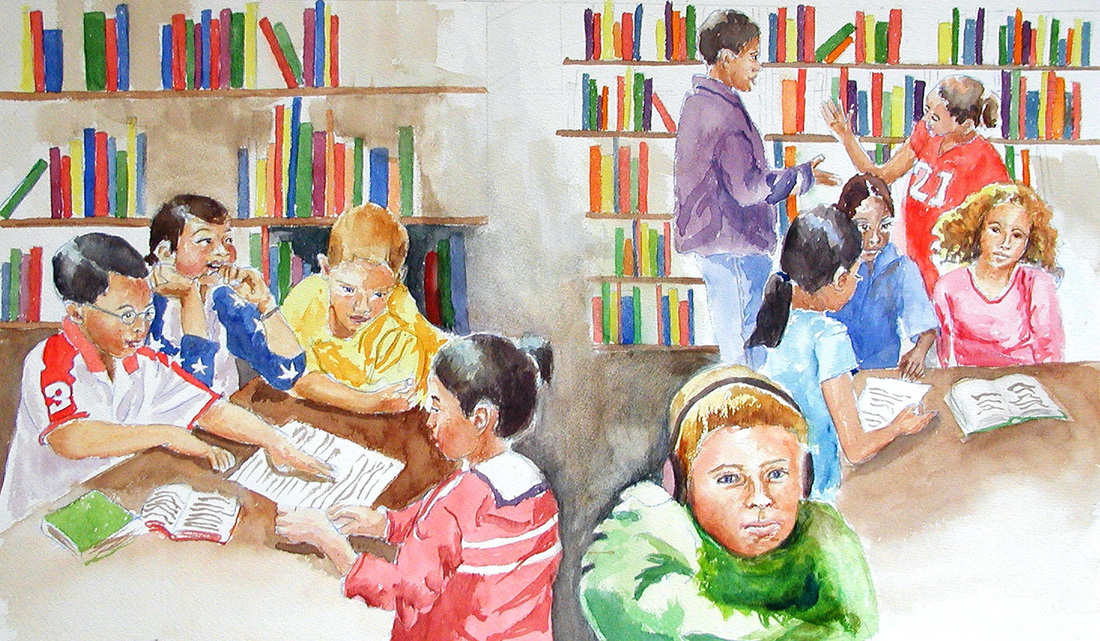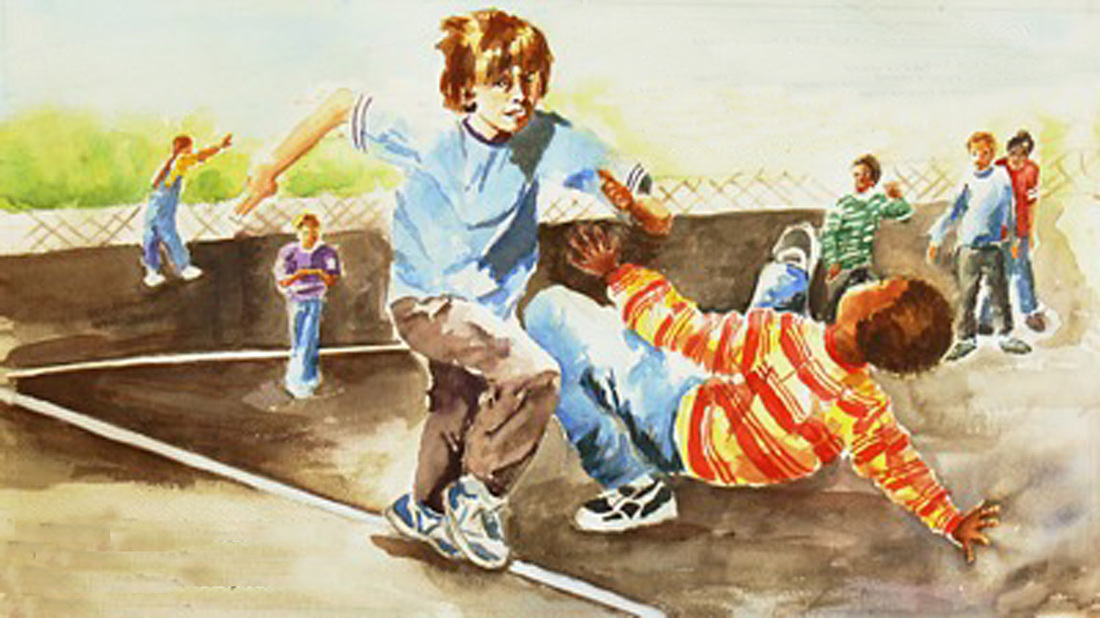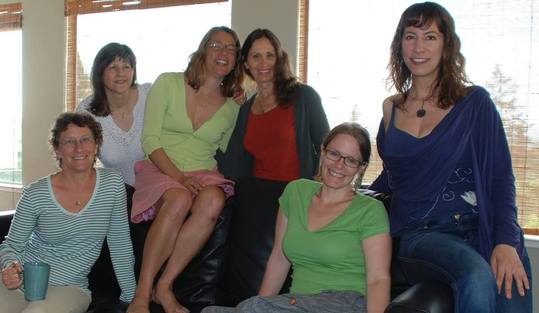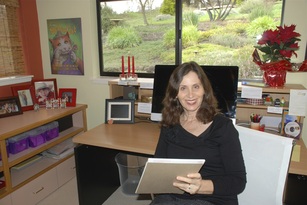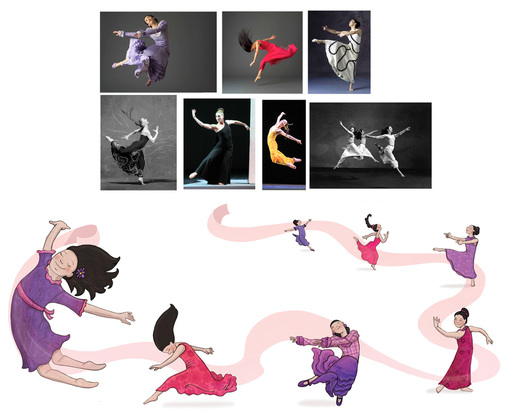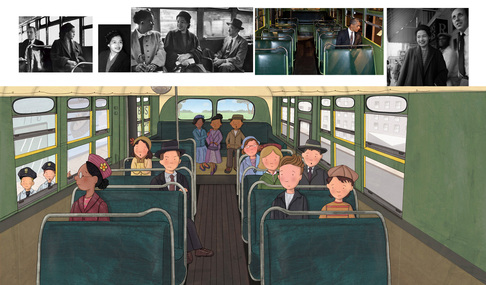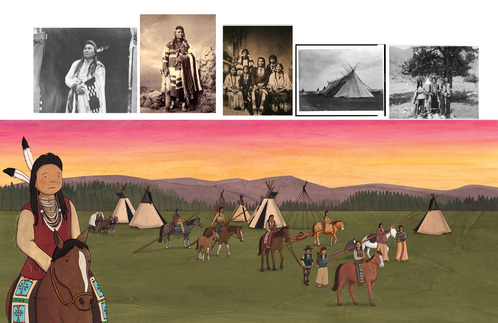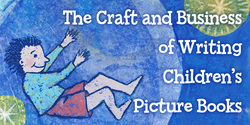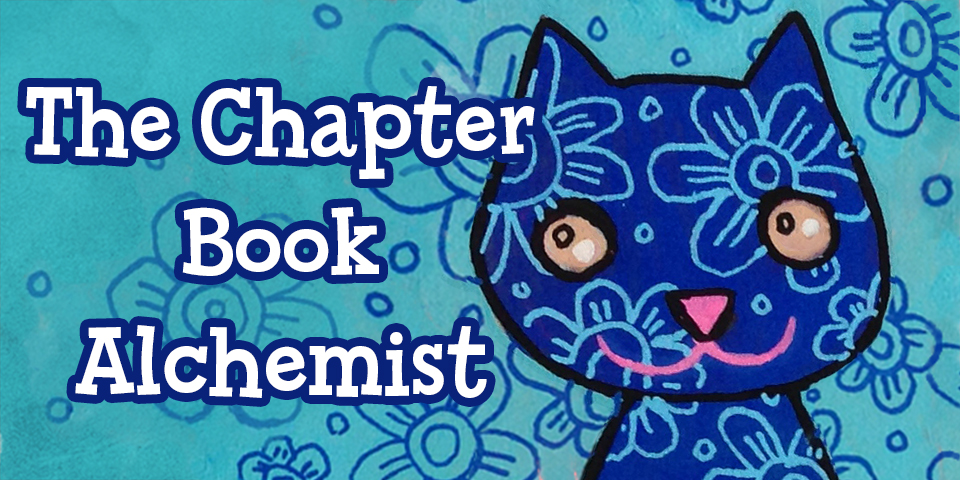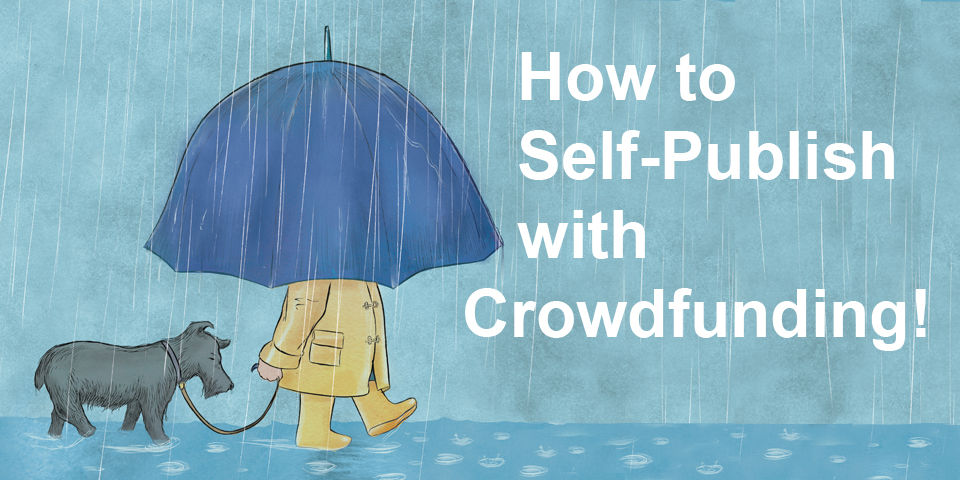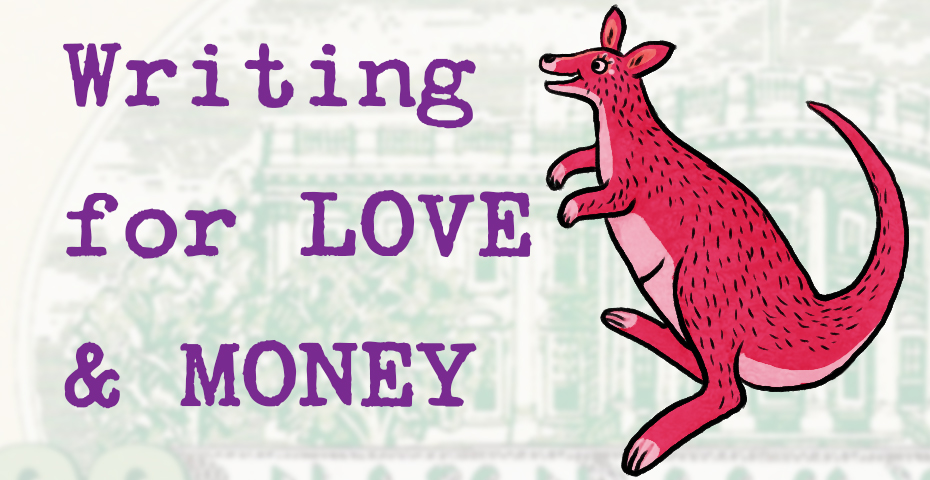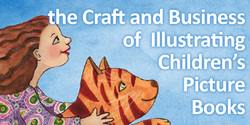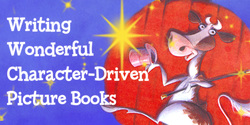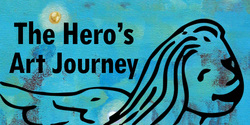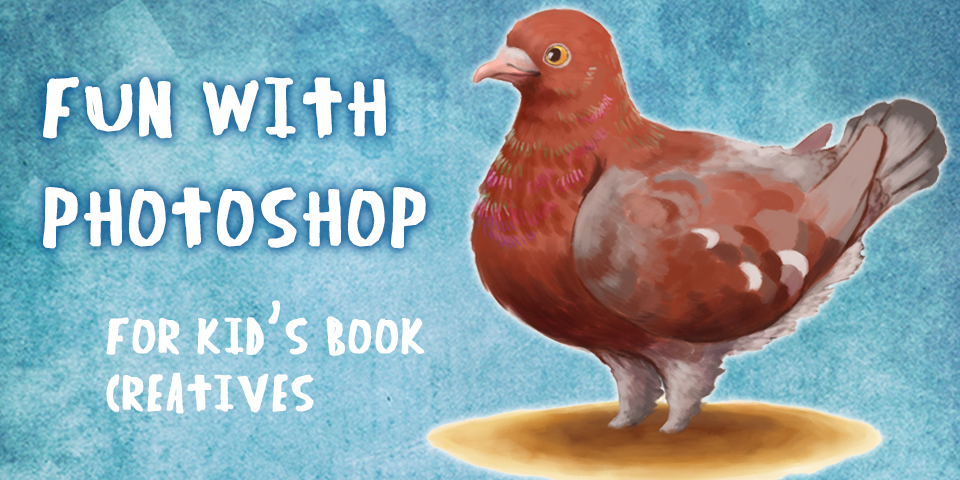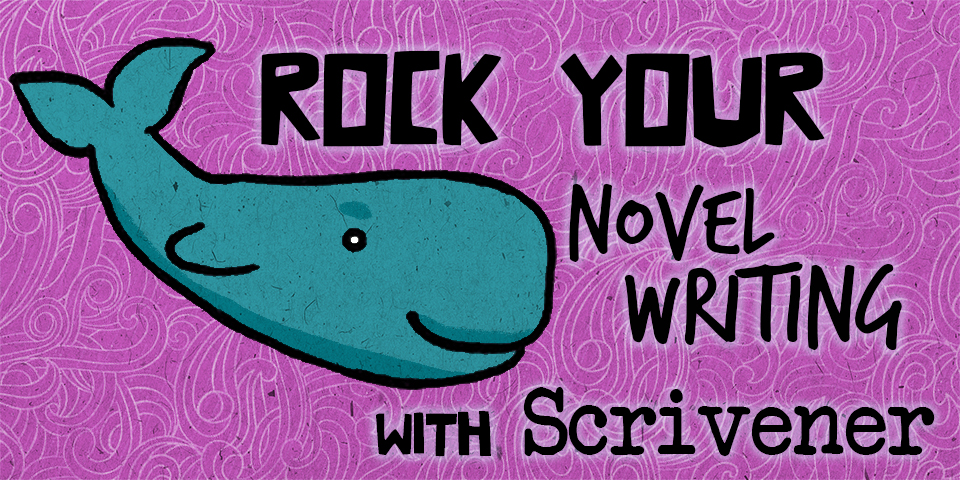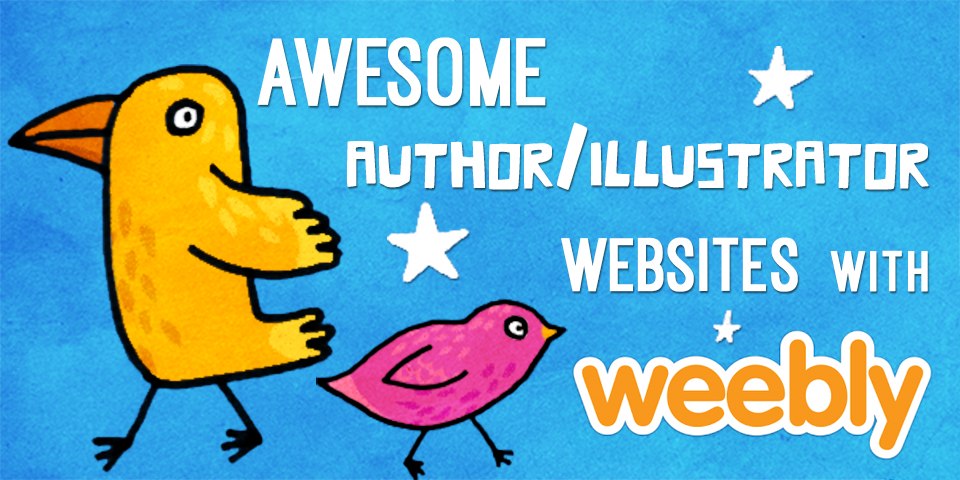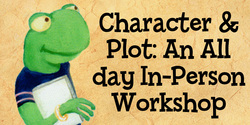|
I am happy to be joining this incredible group of “Blogettes!” Today I want to share with you how I find models for illustrating when a book takes place at a school. I use a real school! This is the plan, which has worked very well: 1 – Find a teacher and school willing to participate in this project. Since I have an actual contract from a publisher, this is not difficult. 2 – Permission slips. The school has the parents sign permission slips, which is necessary even though I will not be publishing the actual photos of their child. 3 – Presentation The day of the photo shoot I do a Power Point presentation on how picture books are created, showing thumbnails, dummies, sample photo references and the paintings that stemmed from them. 4 – Read the manuscript aloud. 5 – Discuss the story with the class With the help of the teacher, I lead a discussion of the story so the kids get involved with the theme and characters. In the case of my book, “Say Something,” the first book for which I used a class, for example, we discussed bullying. 6 – Stage the scenes I next set up each scene in the thumbnails with the appropriate number of children acting out the scene. While I don’t have time in this scenario to set up lighting to perfection, I do keep lighting and consistency of viewpoint and angle in mind when setting up the scenes and taking the photos. 7 – Take additional photos After each scene is photographed, and in between, during recess, I take many photos of the children playing, talking, interacting, to capture expressions and activity that I might be able to use in the book. 8 – Follow up visits to the class I make sure to visit the class again a few times during the long process of illustrating the book. Sometimes I show them the photos I took, and leave some prints for them. Other times I show the dummy I developed from the photos and even a painting or two. 9 – Share the final product – the printed book When the book is published, I come back to show the class and read it to them and we all give ourselves a round of applause. I donate one of the paintings from the book to their school library as a thank you for their participation. I used this process again for “Keep Your Ear On the Ball,” by Genevieve Petrillo, Tilbury House, about a visually impaired boy who joins a regular class of third graders. For this book I found a school that has visually impaired children mainstreamed in regular classes with a wonderful resource teacher for them. There was even a Braille machine one of the students used, which he demonstrated to the class and which was in the book. This book involves kickball, so the class divided into two teams and played kickball while I snapped photos. They knew the story and really got into the characters. It worked very well. My current contract is for “Lailah’s Lunchbox,” by Reem Faruqi, about a Muslim girl who is finally old enough to fast for Ramadan. She is happy and excited, until she realizes that here, in America, her classmates and teacher won’t know anything about Ramadan and why she is not bringing her lunch box to school. She finds an excellent way to resolve her issue of feeling different in a very sweet story. So, this time I had to find a Muslim girl of the right age who does not wear a headscarf. (She says in the book “They don’t even know I’m Muslim,” which, to me, indicated that she did not wear a scarf.) I found a family who was thrilled to participate. Then I had to contact her teacher to see if she would let her class participate too. It all worked out well, and I am currently painting the illustrations for this book. I hope this inspires some of you and gives you new ideas for your illustrations. Lea Lyon is a published children’s book illustrator currently working on her sixth trade picture book. She is the Illustrator Coordinator for the San Francisco-South region of SCBWI, which has opened many doors for her and others. She also leads an annual Illustrator Day conference in San Francisco where as many as 80 illustrators attend and participate. You can learn more about Lea on her website at www.lealyon.com
4 Comments
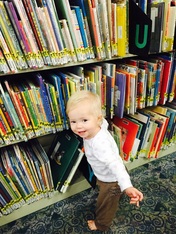 1) Go to the library. 2) Pull out your “must-read” list and start searching. Try to keep your 1-year old from pulling every book off the shelf. Fail. 3) When the screeching and the book-pulling become unbearable, head to the checkout line with your books. Wait. Hear a couple “You’ve got your hands full!” comments (translation, “I’m glad I’m in front of you because, by the looks of it, it will take you 10 minutes just to find your library card!”) 4) Take 10 minutes just to find your library card. 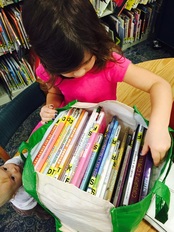 5) Head to the car with your reusable-shopping-bags-turned-library-bags. Notice that they contain all of the books your 6-year-old thought looked cool, all of the books your 4-year-old thought looked pretty, and all of the books your 1-year-old grabbed that you didn’t have time to re-shelve. Oh, and the few books that you managed to procure from your “must-read” list. 6) Throw your library books on the front seat and buckle them up (to avoid the eternal beeping your car will make because it thinks your books are a human passenger). 7) Lug your bags up two flights of stairs. This may take several trips and will most certainly be the best exercise you get all week.  8) Now for the fun part. Sit down and read. All of them. Right away. Because…NEW BOOKS! 9) Make piles: 1) I cannot bear to read this again pile (hide these from your children), 2) This would never be published in today’s market, but I guess I can read it again pile (leave in library bag), 3) Adequate bedtime story pile (put on bookshelf in the kids’ room), 4) This is so awesome, I am going to type it up so I can study it later pile (stack on desk). 10) After a week, find all of your books under beds, in backpacks, beneath couches, among the DVDs, inside pillow cases, behind the toilet and, if you’re lucky, on the bookshelf. 11) Return and repeat.  This post was written by Maria Oka, a mother of three very busy girls whose reading and writing spans from books for the very young to older picture books. Besides being interested in rollicking laugh-aloud books with her girls, Maria is also interested in children's books with a spiritual element. She reads, writes, and tries to juggle dinnertime, school schedules, and doing the dishes one-handed in Southern California, where she lives with her husband and munchkins.
Some folks believe you should only make a resolution that’s practical, one you know there’s a real possibility of reaching. That would be a resolution like writing thirty minutes a day or sending out five queries to agents within the next two months. Others think that visions are acceptable on your resolution list. Visions might include things that are not in your hands (or that most people believe are not in your hands.) They'd say that you can’t set a goal to win the Caldecott because that's in the Caldecott committee's hands. The Cliffhangers decided to make resolutions in both areas. But even visions may need tempering. If you have yet to be published, writing down a vision to win the Caldecott might be skipping ahead too far. Instead, try making your vision getting published by a good publisher, then set goals that will help that vision come to fruition. There are lots of things and lots of emotions that can take us off track as we pursue our resolutions. Becoming discouraged and being anxious are two of them. There’s a quote, often attributed to one popularly known as Lao Tzu, that may help in side-stepping these negative emotions. "If you are depressed, you are living in the past. If you are anxious, you are living in the future. If you are at peace, you are living in the present.” We as writers often become despondent over rejections, but a rejection is in the past, even if you just read it. We are frequently anxious about whether we will ever find an agent or an editor who wants to publish our book, but anxiety doesn’t help our writing. It’s never beneficial. To move forward, the best place for us to be is the present, writing our story. Resolutions. Goals. Visions. These are all ways of reminding us that our talent will rise and shine only if it moves hand in hand with action.
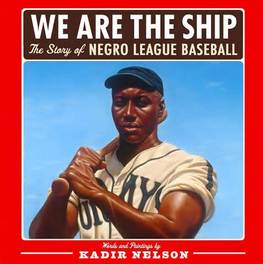 Have there been times when you've tried and tried to get down on paper the image that is in your brain and for some reason your hand just won't draw it? Or, have you ever needed to draw a scene or character from a specific time period but can't seem to get the look just right? Well, stop making things harder for yourself - use photo references! There are some artists who are reluctant to use photo references, especially those just starting out. This is the biggest mistake an illustrator can make. Using a photo reference doesn't mean that you don't know how to draw well or that you're using a "crutch." It means that you're trying to get your illustration right. When I illustrated "The Hero in You" by Ellis Paul, I spent weeks at the library and online researching all the different historical figures talked about in the book. I needed to get not only the time periods right but also the clothing and look of many of the characters. The biggest challenge was that some of the people lived before color photography - or even photography itself - was used. So I had to base some of the images on things that I read about the figures rather than on what I could see. Luckily, the art director and editors at Albert Whitman & Co. helped to make sure that I was drawing things as accurate as they could be. So how can you use photo references effectively? Some artists take photos of exactly what they want to illustrate and render the photo. As long as you've taken the photo yourself (and gotten any models to sign a photo release for you) you should be fine with regard to copyright issues. You can also pose for your own picture by looking at yourself in a mirror or using a camera on a tripod and setting the timer. Dress in a costume or clothing that is as close as possible to what you are trying to draw. And also set the lighting as accurate as you can. This way you can use the photo reference to draw the folds of the fabric, the shadows, etc. correctly. Don't worry - you don't have to look exactly like the character you're drawing. You can change your look to match whatever character you're trying to draw. Even the best of the best do this. Check out this video by the great Kadir Nelson explaining how he posed in an old baseball uniform to draw the figures in "We Are the Ship", the story of the Negro baseball leagues. Here are photos of him posing and then what the final art looked like. If someone as great as Kadir Nelson uses photo references, then I think I can too! Other times, photo references are researched and gathered from a variety of sources to help you get the right character pose or lighting down. Here you can see how I used pictures of different dancers in dramatic poses to create this illustration for the Martha Graham spread in "The Hero in You." A third way to use photo references is to make sure you have the right clothing or look to a character because of a specific historical event. Here are the photo references I used for the Rosa Parks and Chief Joseph spreads from "The Hero in You." It would have been a big no-no for me to have drawn people dressed differently than they did in the 1960's or the wrong kind of bus that Rosa Parks sat in. Or imagine if I had drawn Chief Joseph with different clothing than the Nez Pierce tribes wore, or different kinds of teepees that the Nez Pierce built. You can't be too careful with these kinds of illustrations. If you're able to draw everything from your head perfectly, congratulations! You're one of the few out there that can. But my advice is - don't be lazy or prideful about using photo reference. It's better to be professional and get things right the first time.  Angela Padron is a published illustrator of two books, including "The Hero in You" by Ellis Paul, as well as a Star Wars geek and chocolate chip cookie connoisseur. She also writes and illustrates her own picture books, board books, and chapter books. When she's not teaching, Angela works as a freelance writer and editor for educational publishers and spends weekends enjoying walks along the beach with her family. View her online portfolio at www.angelapadron.com. You can also "like" her facebook page, follow her on Twitter @angela_padron, and follow her own blog called "Show and Tell" with weekly posts about teaching, writing and illustrating books for children. |
Meet the Friday Blogonauts
First Fridays will feature Bryan Patrick Avery, published writer , man of mystery, and professional magician among other things.
Second Fridays will feature awesome multi-award winning author Marsha Diane Arnold who will be writing about character-driven and/or nature-based books and/or anything she likes :) Third Fridays will feature independent Aladdin/Simon & Shuster editor Emma Sector who has helped bring many books into the world. Fourth Fridays will feature the great Christine Taylor-Butler who has published over 70 award-winning fiction and non-fiction and nonfiction books including the acclaimed new middle grade series - The Lost Tribes. Fifth Fridays will feature the fabulous Carl Angel award-winning multi-published Illustrator and graphic designer. Join our Tribe
and receive 7 Steps to Creative Happiness, access to free webinars, and lots more!
Your email addresses are always safe and respected with us. Follow our Blog!
Archives
January 2019
Categories
All
|
|
Discover
|
About Us
|
Join Us
Join our Community and receive a fabulous free gift, KidLit tips, newsletters, scholarship info, contests, and more!
Join our KidLit Mentorship |
Social Media
Interact with our FaceBook Group or follow us on:
|
© 2010-2024 All content on this website is copyrighted. Sorry, all courses are non-refundable.
